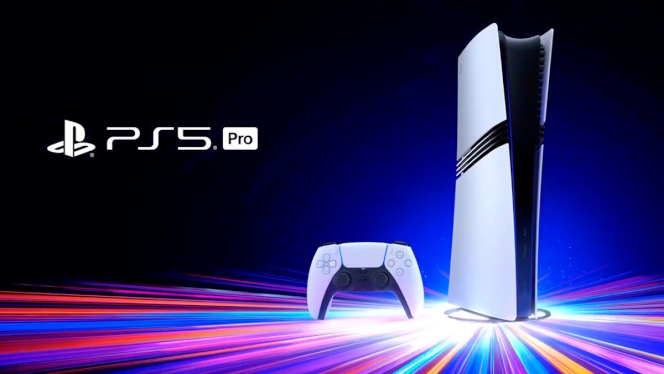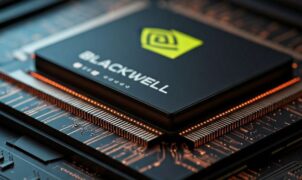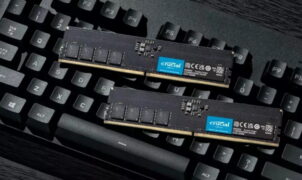Digital Foundry had a chance to test the half-generation console update that is about to hit stores and share some of the experiences.
The video below will take an hour of your free time, but you can find out what the editors think of the PlayStation 5 Pro, while we also get some interviews with developers alongside footage of the games being recorded. Let’s take a look at what new features we can expect to see in which games.
In addition to DDGI (Dynamic Diffuse Global Illumination), Codemasters has added three ray-traced effects for ambient occlusion, transparency and opaque reflections to F1 24. Anisotropic filtering has also been improved. According to Digital Foundry’s Oliver Mackenzie, in some cases these additions amount to a generational leap in visuals. However, image stability in this RT mode isn’t as stable as in the PS5’s base quality mode, probably due to a combination of PlayStation Spectral Super Resolution (PSSR) and the noise caused by the ray-traced effects. PSSR will be added to other modes in the future.
Gran Turismo 7 features two PS5 Pro modes. One adds real-time ray traced reflections during races. However, GT7 has a more limited ray-tracing implementation than F1 24, with off-track elements and even some on-track elements not included in the reflections. Image quality and stability also suffer a bit in this RT mode compared to the base PlayStation 5. For those who don’t care about the ray traced reflections, there is an image quality priority mode that uses PSSR and looks very clean in comparison.
As for Horizon Forbidden West, Guerrilla Games confirmed that it uses a new anti-aliasing reconstruction technique that was originally developed for future games, but then ported back to the second installment of the Horizon series. It’s not PSSR or checkerboard, but Digital Foundry was very impressed as it looked much more detailed and stable than the previous solution that came with the game. There will be a quality mode that renders more often at 4K or near 4K resolution, but the developers really believe that PlayStation 5 Pro gamers should rather use the new performance mode as it already looks extremely good.
Hogwarts Legacy’s Fidelity RT mode on PlayStation 5 Pro will feature significantly improved ray-traced shadows and reflections compared to the base PS5, with reflections using double the resolution. The developers attribute this to the console’s BVH management, which is much faster than the PlayStation 5’s and allows them to “collect” objects from much further away. Avalanche Software also confirmed that they have switched to PSSR for all modes (they were previously using Unreal Engine 4’s TAA).
According to Digital Foundry, in Marvel’s Spider-Man 2, PSSR looks “different” in Performance Pro mode than it does in Quality mode on the PlayStation 5 version, resolving some details better than others. Of course, this is while running at twice the frame rate. Insomniac said they plan to continue improving the Quality Pro mode, hinting at possibly adding some ray tracing techniques that would take advantage of the PlayStation 5 Pro’s much improved ray tracing capabilities. They also confirmed that they have removed a sharpening filter that was previously applied to their anti-aliasing reconstruction technique, as it is no longer needed with PSSR. As for Ratchet & Clank: Rift Apart, the image quality and PSSR hold up better than in Marvel’s Spider-Man 2, possibly due to the lower load.
In The Last of Us Part II Remastered, PSSR once again seems to resolve a lot more detail than the blurry TAA used in the base PlayStation 5. However, it also has worse image stability, and depth of field is not working properly in some cases. Final Fantasy VII Rebirth is the poster child for the PlayStation 5 Pro, as the PS5 delivered deeply disappointing image quality in performance mode. Details are much higher on the PlayStation 5 Pro. However, Digital Foundry still found some stability issues, and the LOD drawbacks haven’t improved. The Crew Motorfest is another game where the performance mode sees a big improvement in detail thanks to PSSR. The developers are also porting over some of the higher settings from the PlayStation 5’s Quality mode. Demon’s Souls Remake is improved on the PlayStation 5 Pro by allowing for higher resolution and the introduction of contact shadows. In Dragon’s Dogma 2, PSSR looks much better than the old checkerboard solution, but it seems to have some problems with RTGI in this game. Overall, though, the game ran much faster on the PlayStation 5 Pro, hitting around 50fps in the notoriously tricky urban scenarios.
You’ll have to pay $700 for that, though!
Source: WCCFTech














Leave a Reply